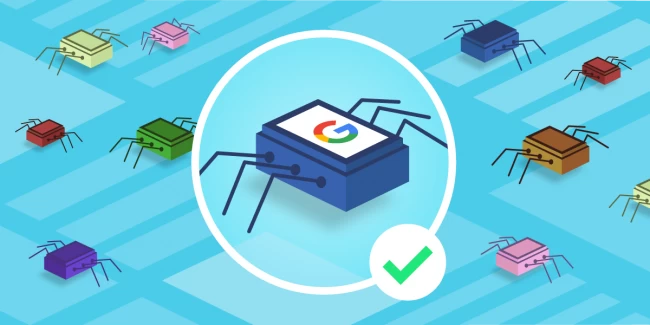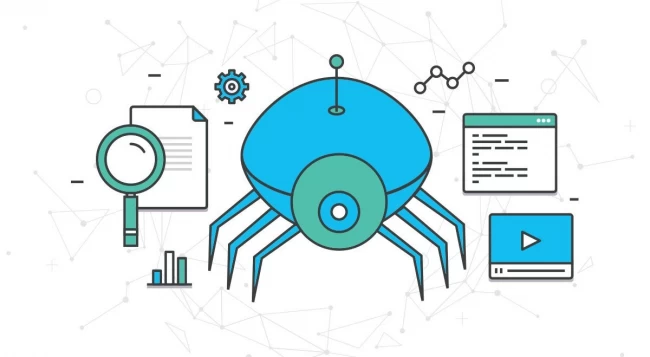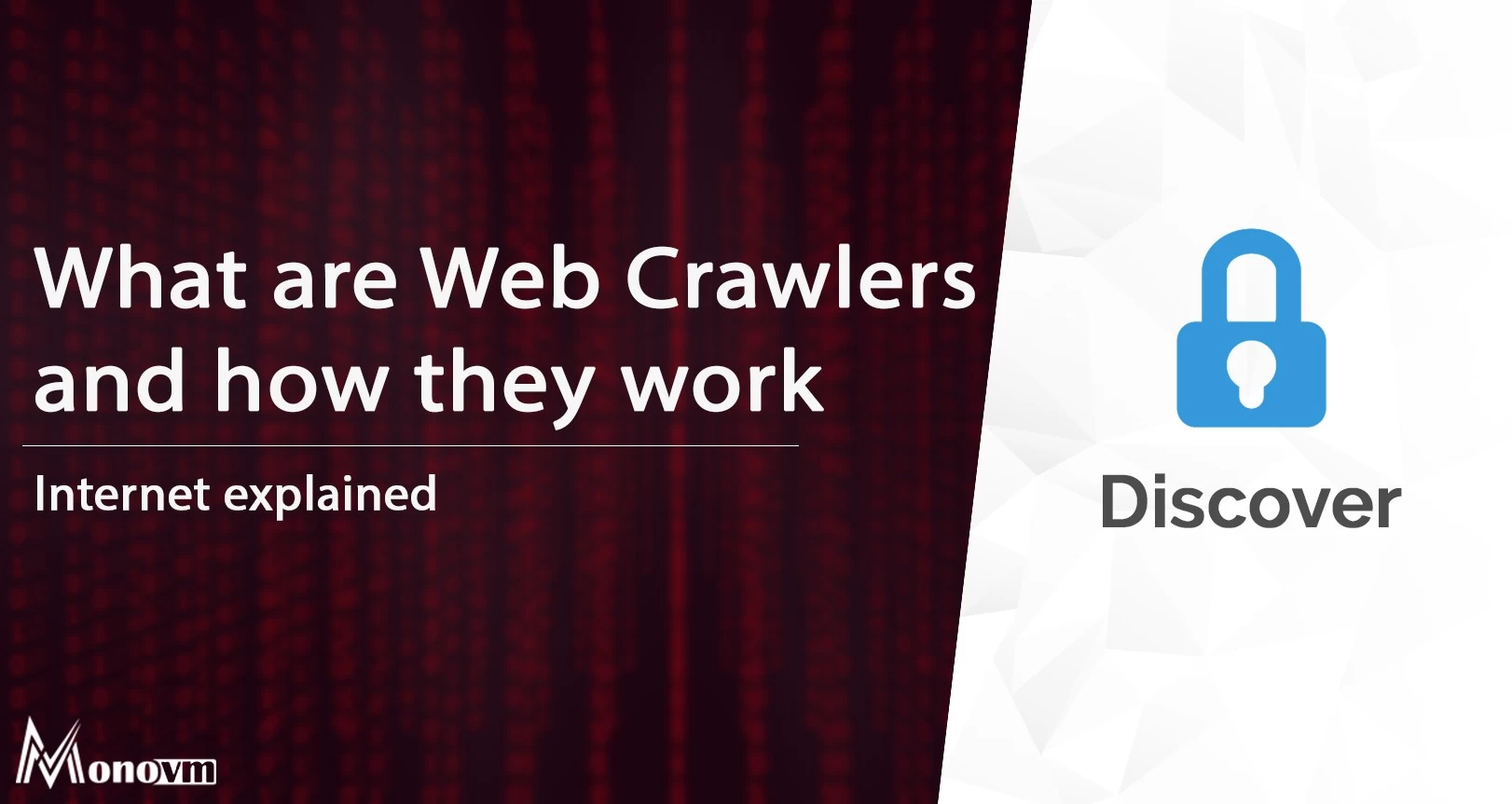List of content you will read in this article:
Search engines are now a big mystery to everybody, and they are getting to that next advanced level before we even know it. At some point in time, we always wondered how search engines like Google and Microsoft are showing exact and accurate results when we type something in the query box. We enjoy the internet speeds and leave it there, but there is something super fascinating behind the scenes. The search engines bring in different parameters to get the most precise answer for the respective query. Some of them include search and index factors, which work based on an automated script present in a program called Web Crawler.
Some people even like to call them 'Spiders,' which hide in the darkest corners of the internet web and are not accessible to humans. While they crawl all over the internet covering several websites, they tend to analyze different factors relating to that particular website. These web crawlers or spiders set goals to define a website's usefulness and structure to collect all the necessary information. To understand some essential aspects of website crawling, it is necessary to break down its working and important real-life applications or use-cases that are benefitting people daily.
What are Web Crawlers?
Web Crawlers are programs containing automated scripts that allow them to search through different websites systematically. During web crawling, the program selects a group of relatable keywords and assesses the links attached to each content page before it generates the information for the respective query. When you need a certain page from the search engine, web crawlers bring it onto your screen by methodically indexing the pages. As these web crawlers work in an automated fashion, they are also called bots, automatic indexers, or even robots. In some cases, they are called spiders because they crawl all over the web like a real-time spider.
How do Web Crawlers Work?

The internet is always evolving and expanding, with massive and different types of content being posted daily. As it does not involve any central filing system, it is crucial to deploy software to detect the user's required web pages. Web crawlers fill in the gaps for such requirements, and they discover web pages accessible to the general public. To understand the stepwise process, we need first to evaluate the architecture of a web crawler. A simple and easy-to-understand architecture is as follows:
- A queue is treated as an element from which different works parse the content pages. It is responsible for extracting some aspects of a web page like hyperlinks and the entire content format.
- When the extraction is completed, the content is then given a particular index that comes into play when the web needs to retrieve it. Search indexing is done, and it is stored in an ordinary relational database.
- Once the content is analyzed and stored in the database, the workers get back to the links present in the respective web page, and they add it to the queue. They redirect back to those URLs and repeat the same process.
- Workers stop the process once the queue is no longer having any web pages to deal with or the program has hit a complete cycle to crawl back to the original website.
Google Inside Search- Web Crawlers

For google search engines, the crawling process is initiated by web addresses generated from past crawls. Spiders use the links present in websites to visit more web pages. While discovering new content on different web pages, the software is given the necessary algorithms that pay more attention to the existing links and dead links. Website owners are also given a choice to decide how Google crawls over their sites' information. If users feel unable to permit the web crawlers, they can opt-out of the entire process using a file called "robots.txt."
Web crawlers are used for both finding and organizing information by following specific signals. They make sure to generate new websites and content for the users by addressing different key points in their search index. These are used to optimize users' search results and give them other search options to make their queries more effective. Some of the critical role players are as follows:
Spelling Mistakes- If there is an instant where the user misspells their query, they are given an alternate option to get back on track with the search results.
Search Methods- People often assume that searching over the web is done only via text, but there is more to Google search engine than just typing out some words. It provides its users with different search methods that include images and voice.
Synonyms- One of the most underrated factors to influence your search results is synonyms. Web crawlers tackle different queries using similar worded meaning by identifying the common phrase or word and produces desired search results.
Query Analysis- With an in-depth understanding of the users' surf behaviour, the program or the script alters and anticipates what they need from a particular web page.
Types of Web Crawlers

Website crawlers may have similar functionality and working abilities, but they may differ in purpose and applications. So, in this section, we are going to cover different types of web crawlers that are on the good and bad corners of the internet.
Search Engine Website Crawlers
Most businesses and companies implementing online digital technologies use this type of web crawler. Search engine crawlers have a strong foundation with almost all search engines like Google and Microsoft. These search engines are integrated with both crawl and scrape abilities, so a two-way software runs over a vast server farm. These web crawlers are stored in servers that are physically and virtually inaccessible to the user. Hence, search engines allocate specific tools to track their data collected from crawling and scraping processes. If one uses Google as their search engine, they are accompanied by a tool called 'Search Console,' which is previously known as Webmaster Tools.
Personal Website Crawlers
As the name highlights, these web crawlers are used for personal/ business purposes. One of the most significant differences between a search engine and personal web crawlers is server control. In the case of personal web crawlers, they have limited power to increase the software's functionality, but they do have complete control over the servers. These automatic programs can be built right from a desktop-based computer, and they can be deployed on a small scale to fulfil one or two specific jobs.
Commercial Web Crawlers
Companies need both control and scalability when dealing with massive systems and software solutions, so they opt for a commercial web crawling solution. These web crawlers have all the required capacity, and they even come with high-level functionality to deal with extreme system load. The differentiator for this type of web crawler would be the features. Commercial website crawlers come with some of the most extensive tools and features that increase workflow productivity and effectiveness.
Cloud-Based Website Crawlers
Cloud systems enable users to overcome some of the downsides of a desktop-based system, and they are doing it by giving access to run online from any location in the world. Cloud-based website crawlers take advantage of distributed networks, and they use remote servers to extend the level of scalability. Cloud tools are preferred because they do not ask for a computer to be switched on while different programming websites crawl. They also don't deal with software updates, which can slow down the process of scraping or crawling. The best part about cloud website crawlers would be to entertain collaboration between multiple users and create projects that generate more efficient search results.
Few Applications of Web Crawlers

In the present day and age, businesses and individuals' most important thing is to grow their online presence. If you are seen online, you have got yourself a chance to increase your conversion rate, which decides the total amount of revenue. Online presence comes from ranking on the first pages of different search engines, and that is done by delivering the best possible solution through content and images. This is where web crawlers come into the picture! Website crawlers can help companies map out their online strategy and optimize it in the best way possible to target their desired audience. Some of the notable use cases of web crawlers in different sectors are laid out below:
Real Estate
Real Estate is a vast market in any country and continent, so it requires more attention and effort to develop an online presence that gains more traffic to particular listings in different parts of the country. Real Estate needs all forms of the content displayed on websites because users or buyers want to check all the information and images to evaluate the property's market value. Web crawlers can be implemented here to achieve better search results for both photos and content pages. Catalogues are created to showcase the house's images, and information, including a number of bedrooms and other relevant info, is presented in a structured format.
Automotive Sector
The features used for the Real Estate and Automobile industry are similar because in both cases, users require tons of information to narrow down their buying decisions. Search engine web crawlers take care of content resources like blogs and forums to build a unique automobile community. When dealing with automobiles, website owners must set specific parameters for web crawlers. The script follows these parameters/trends to get the most accurate and updated data during information extraction.
Commercial Use-Case: SEO
One of the biggest advantages of implementing web crawlers is that they provide various features and optimization tools to target audiences on the internet. SEO (search engine optimization) tools have different processes under their belt that use web crawlers, and they perform not one operation but a plethora of effective search optimizations.
SEO audits and competitor analysis are two of the most important elements for ranking, and web crawlers facilitate a huge way for the users to make it possible. As web crawlers are always on the move to the next link or URL, they are even used for monitoring specific pages for a fixed amount of time.
SEO agencies set up an alert system using web crawlers, and the technology associated with these spiders notifies them about serious concerts regarding website maintenance. Few other examples for web crawling for SEO are keyword rankings, backlinks, and website migration.
PS: If you're looking to create backlinks for free, have a look here!
Things to Note Before you Implement a Web Crawler

Number of Workers
Whenever we deal with workers, it has something to do with hardware restrictions to maximize the crawler's speed. It is often recommended to start with a machine having six-core processors and two virtual cores for each physical core. This results in a total of 12 workers, and it is best to start with this number because they wouldn't be fighting over resources even at the time of peak performance. As we know that one process runs inside the elixir, which means only one is assigned to each core. This is the best-case scenario because users can run different methods simultaneously without contesting for the same resources.
Overloading of Sites
It is important to note that web crawlers should not slow down or take down a website from experiencing average amounts of traffic. Your web crawler should adapt and take different forms to track response times. One must follow different throttling methods to slow down or create a reasonable delay between one request and another made from the user's side. Tracking response times and processing URLs is one method, but one can also implement the request automatic throttling method. This may sound complex, and it is at the time of implementation, but it provides the best request rate for any web crawler.
Limit your Crawler
As is already mentioned in the previous sections, robots.txt is a file present in almost every website, and it is used to set limitations for web crawlers. If website owners do not want to be crawled, they can respect this particular file and implement it in their way. Respecting the robots.txt is beneficial because it reduces many problems for the developer and causes the least amount of trouble during implementation.
Conclusion
The importance of web crawlers in today's mobile-first world is huge and will only increase in the future. In the next few years, we might see almost all small businesses adopt web crawler technology. The demand for data will only increase, but the format may change, so we may also witness some significant changes to how web crawlers operate for video and voice content pages. Bot management will develop with web crawling because it can easily access different web properties without lowering user experience. That is how the future may look for web crawlers, and we will see more implementation methods soon.
